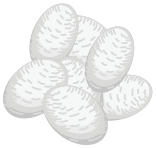
Lachesis
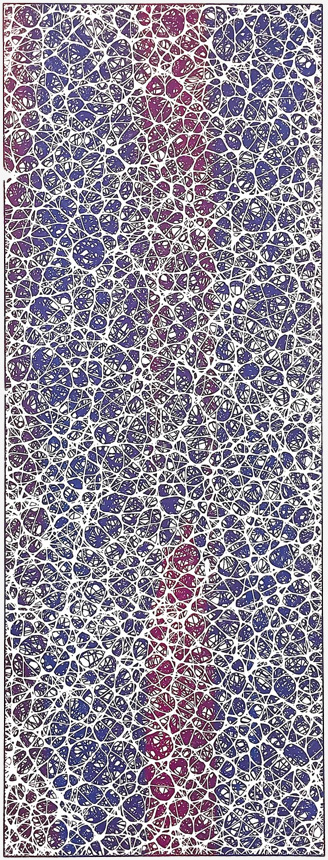
Tapestries
The Lachesis tapestries are printed with chemically, environmentally reactive inks that change color in response to their surroundings.
Printed on silk fabrics, the inks contain a blend of silk in liquid format with other naturally-derived biomaterials and chemical indicators. These silk-based inks allow for the printed patterns to stay chemically active and biologically responsive even in their dry state.
The pattern is inspired by an electron microscope image of the surface of a silkworm cocoon, with its interwoven network of fine threads. These are unraveled to provide one of the world’s most luxurious fibers, woven into beautiful garments but sometimes reinvented into unexpected surprise.
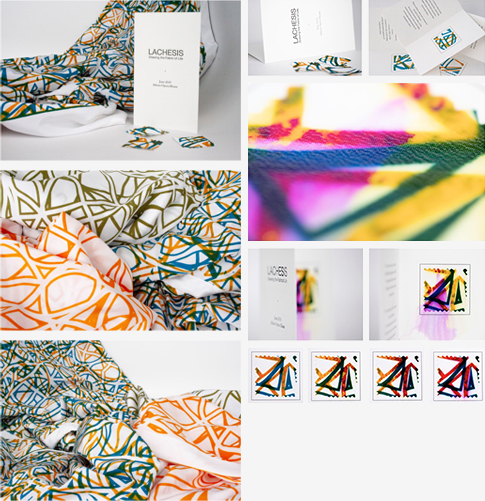
NOTE - These inks are not fixed for colorfastness. Apply the spray sparingly for a clean effect, or apply it abundantly for the colors to run and have a “watercolor-like” effect.
Cards
The cards contain a swatch of textile that is dyed with chemically/environmentally responsive inks. When exposed to different environmental conditions, the inks change color giving a signature of the environment that surrounds them.
These inks can be transformed by exposing them to different fluids with different levels of acidity such as diluted vinegar in water or water with baking soda. The different pH of the solutions will leave a trace depending on their concentration and ion content.
All the color combinations contain information of the world around them that can be used in multiple ways, from health monitoring, to environmental monitoring to art and design.
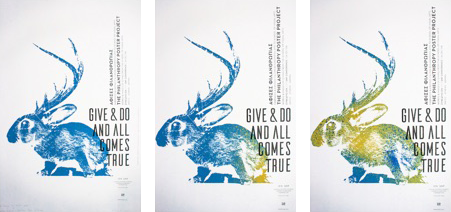
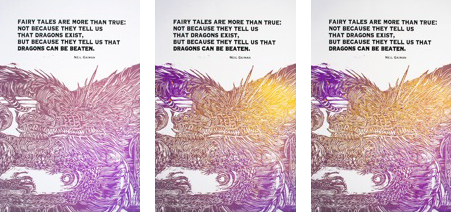
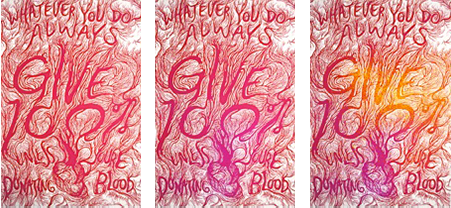
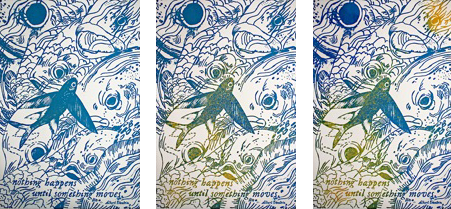
Give & Do and All Comes True - Viktor Koen
Dragons Can Be Beaten - Mark Aquino
Whatever you do... - Kelsey Short
Nothing happens... - Christina Rycz
30x44 cm bioreactive ink screen print on watercolor paper — series of 10 prints
Living Prints
Posters from the SVA Philanthropy Poster Project for the 2019 SNF Conference in Athens, curated by Viktor Koen. The posters are screen printed in 10 replicas with silk-based chemically responsive inks onto Arches 88 watercolor paper.
The designs can be subsequently transformed by painting or spraying fluids with different ionic properties causing the printed patterns to change their hues giving each print a unique palette.
Give & Do and All Comes True - Viktor Koen
Dragons Can Be Beaten - Mark Aquino
Whatever you do... - Kelsey Short
Nothing happens... - Christina Rycz
30x44 cm bioreactive ink screen print on watercolor paper — series of 10 prints
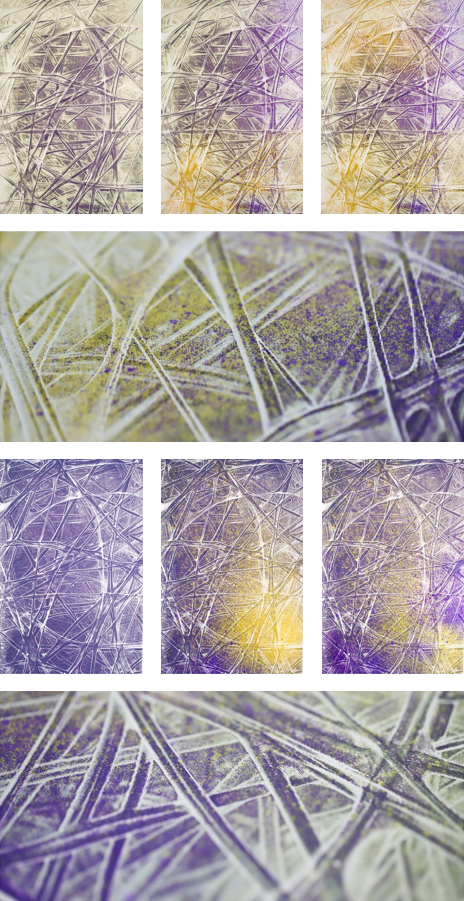
From Silk to Silk
60x88 cm bioreactive ink screen print on watercolor paper- series of 10 prints
Living Prints
Images of the surface of a silkworm cocoon printed with environmentally reactive silk inks - from silk to silk.
The image shows the weave that constructs the robust shell protecting the Bombyx mori caterpillar. Each fiber has roughly the diameter of 1/10th of a human hair and a tensile strenght of the same order of magnitude of steel.
The reactive inks are transformed to make the material depicted come to life through color changes.
60x88 cm bioreactive ink screen print on watercolor paper- series of 10 prints
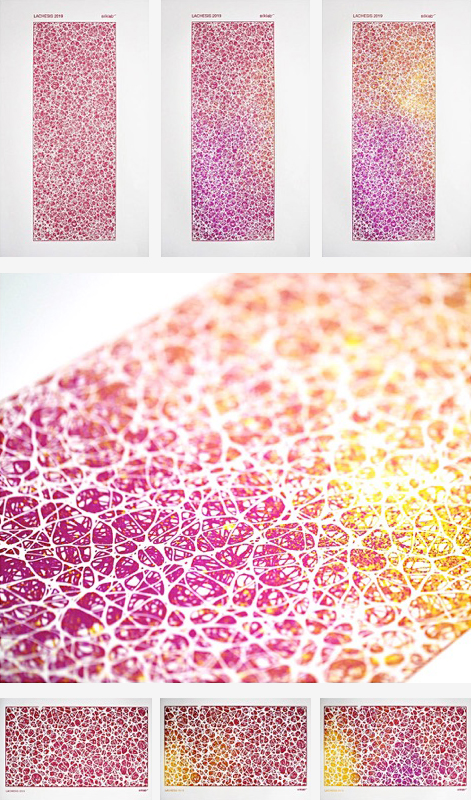
Lachesis - Fire and Sun
60x88 cm bioreactive ink screen print on watercolor paper— series of 10 prints
Living Prints
The geometry found on the surface of the silkworm cocoon inspired a pattern that represents the intricate network of fibers spun by the Bombyx mori caterpillar.
The pattern is printed in bioreactive inks which change in response to the environment surrounding them, adding depth and color to this intricate and fascinating construct.
60x88 cm bioreactive ink screen print on watercolor paper— series of 10 prints
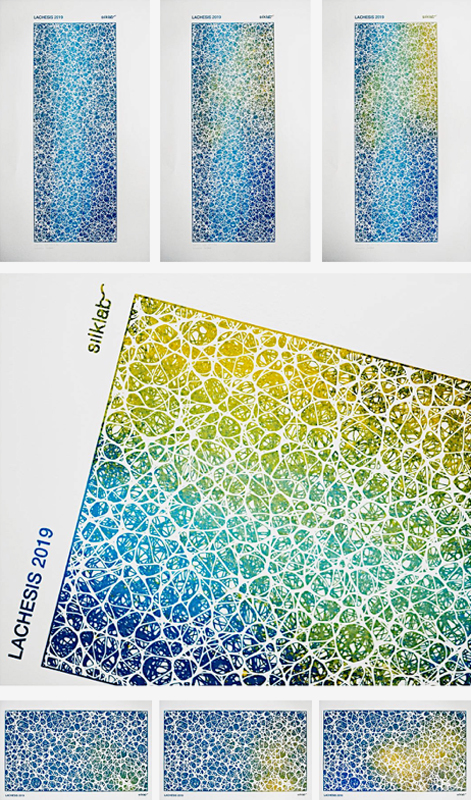
Lachesis - Earth and Sea
60x88 cm bioreactive ink screen print on watercolor paper— series of 10 prints
Living Prints
The geometry found on the surface of the silkworm cocoon inspired a pattern that represents the intricate network of fibers spun by the Bombyx mori caterpillar.
The pattern is printed in bioreactive inks which change in response to the environment surrounding them, adding depth and color to this intricate and fascinating construct.
60x88 cm bioreactive ink screen print on watercolor paper— series of 10 prints
